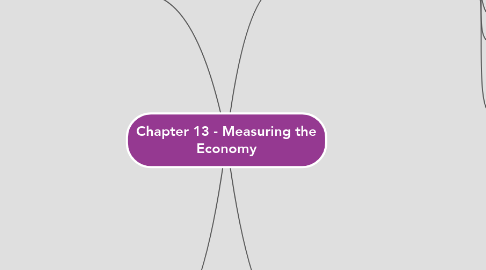Chapter 13 - Measuring the Economy
by Olivia Ohm

1. 13.2 - How Do Economists Measure the Size of an Economy?
1.1. A steadily growing GDP is generally considered a sign of economic health.
1.2. Economists use GDP figures to determine not only how big an economy is, but whether it is growing or shrinking and at what rate.
1.3. As a country’s per capita GDP increases, so too do other indicators of well-being, such as literacy and education, health and life expectancy, and the standard of living.
1.4. gross domestic product: the market value of all final goods and services produced within a country during a given period of time
1.5. market value: the price buyers are willing to pay for a good or service in a competitive market]
1.6. .....
2. 13.5 - How Does the Business Cycle Relate to Economic Health
2.1. The business cycle consists of four phases: expansion, peak, contraction, and trough.
2.2. Business cycles are irregular in both length and severity. This makes peaks and troughs difficult to predict
2.3. Business cycles are popularly known as periods of boom and bust. A boom is the expansion phase of the cycle. however, a boom usually turns into a bust.
2.4. business cycle: a recurring pattern of growth and decline in economic activity over time
2.5. recession: a period of declining national economic activity, usually measured as a decrease in GDP for at least two consecutive quarters (six months)
2.6. .....
3. 13.4 - What Does the Inflation Rate Reveal About an Economy’s Health?
3.1. Inflation can occur because of loss of purchasing power, higher interest rates, and a loss of economic efficiency.
3.2. Over time, technological advances may improve the quality or add to the lifetime of a product.
3.3. Inflation can also be caused by increases in the cost of the factors of production.
3.4. inflation rate: the percentage increase in the average price level of goods and services from one month or year to the next
3.5. deflationary spiral: a downward trend in prices, wages, and business activity
3.6. .....
4. 13.3 - What Does the Unemployment Rate Tell Us About an Economy’s Health?
4.1. Like the GDP, the unemployment rate is a useful indicator of the health of an economy. In general, a high unemployment rate means the overall health of the economy is poor
4.2. Economists identify four types of unemployment: frictional, structural, seasonal, and cyclical.
4.3. Some people will always be out of work, even in an economy with full employment.
4.4. unemployment rate: the percentage of the labor force that is not employed but is actively seeking work
4.5. underground economy: a sector of the economy based on illegal activities, such as drug dealing and unlawful gambling
4.6. http://www.socialjusticesolutions.org/2014/01/23/unemployment-rate-really-tell-us
4.7. ......


